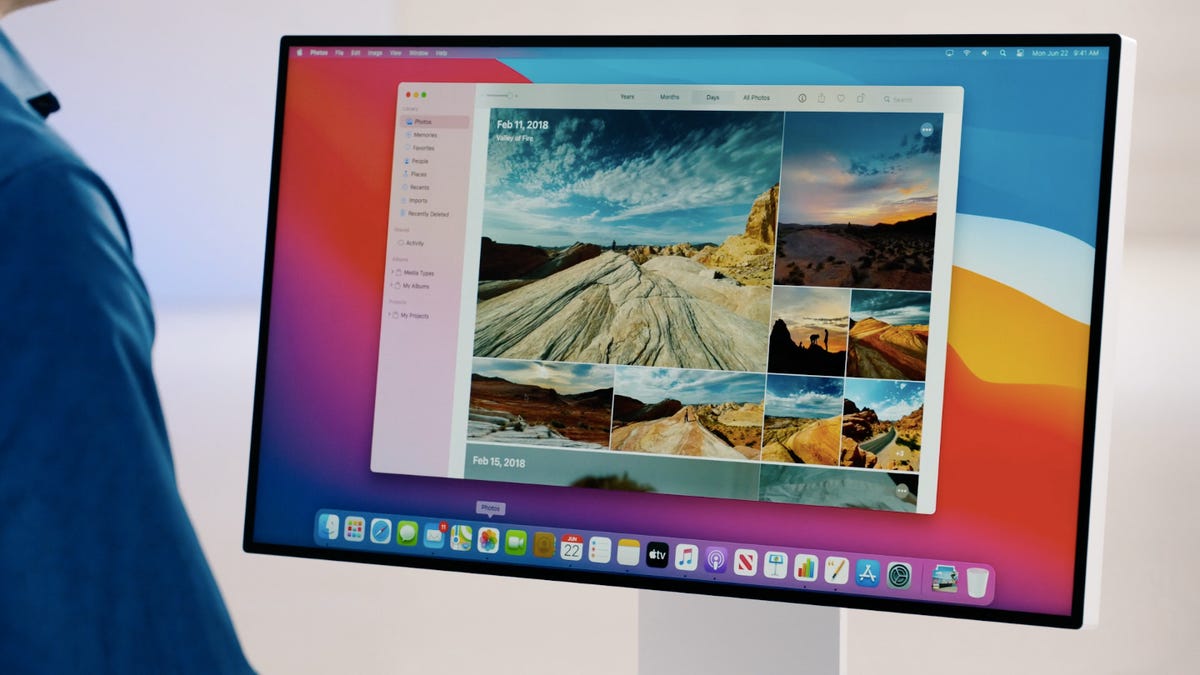Apple says the new MacOS Big Sur update is its biggest design change in almost 20 years
The refreshed operating system for Mac computers includes a big update to the web browser, more privacy tools and a new look.

A look at the new MacOS Big Sur.
Apple on Monday introduced the new Big Sur version of its MacOS operating system for its laptops and desktops , with a big focus on updating the Safari web browser. The announcement came during Apple's Worldwide Developers Conference, which for the first time took place as a virtual event due to the coronavirus pandemic.
Apple's MacOS, first released in 2001, powers the company's computers like the MacBook Pro , MacBook Air and iMac . The hardware giant billed the Big Sur update as its biggest design change since OS X first came out nearly 20 years ago, with tweaks to the curves of the window corners, dock icons and colors of the operating system.
Safari was refreshed to include a new privacy report button to let you see how websites track your data, and a monitor to check if any of your passwords were compromised in a security breach. The App Store is getting a new category for Safari extensions, and it will let you customize which sites and times each extension is used, instead of all the time you're surfing online.
A customizable Safari start page will allow you to pick from a curated group of wallpapers or use one of your own photos. Also, built-in translation will let you translate webpages from seven different languages.
Other changes include the ability to create and change Memojis and a refreshed Maps app, which allows you to create your own guides of restaurants and parks, and save important locations like home and work. The Messages app was refreshed so you can pin important conversations to the top of the app (a similar feature was announced Monday for the new mobile iOS software) and search was reorganized so you can see results in categories of links and photos.
Years back, Steve Jobs touted that MacOS served as the basis for Apple's iOS iPhone software. Over the years, Apple's focused on building apps and features for its MacOS that complemented its other devices, including its marquee iPhone, in a bid to bring more cohesion to its different families of devices. That included bringing over more mobile-centric apps like its iMessage communication service, FaceTime video chat and App Store, which all first launched on iOS.
In last year's Catalina MacOS update, the Mac lineup was tied in more closely to the iPad . One feature, called Sidecar, allowed people to use the iPad as a second screen when using their laptops. The iPad could also be used as a drawing tablet for the Mac.
See also
Another major feature change last year was the retirement of iTunes, which had become bloated with all kinds of features and types of media. It was broken up into a variety of more easily manageable apps: Music, Podcasts, TV and Books.
Despite Apple's popularity, and the success of its iPhones and iPads, the company's Mac computers still only represent less than 10% of computers being used today. The Mac lineup, too, represents a small part of Apple's revenue, with iPhone sales accounting for the biggest chunk, by far. Last fiscal year, Mac sales accounted for just under 10% of Apple's sales, roughly the same as the year before, while services sales and accessories and wearables sales showed healthy growth.



